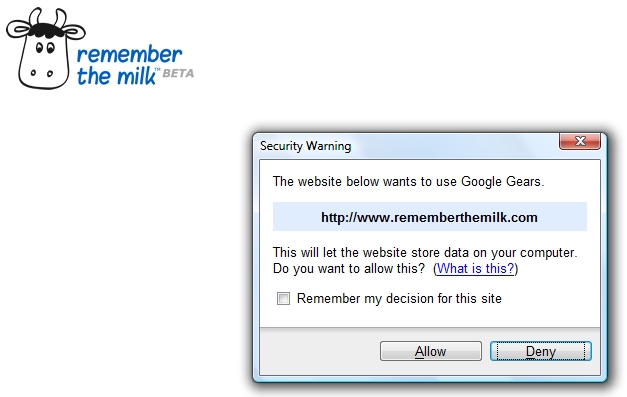During the last two years, pretty much every aspect of my life has changed, with things only now just starting to settle down. For the first time during that window, I took a month off (August) and am not doing any travel or presentations for work. Instead, I’ve spent a small portion of this newly-recovered time trying to re-establish routines that long ago fell by the wayside.
One of those routines is how I keep up, something I haven’t been doing very well during this time. I’ve been experimenting with different aggregators, trying to find one that makes me more efficient that I can access while on the go. I’d given up on the mobile access, mainly because I was looking at it through the lens of my Treo since it’s the one internet access point I always have with me. It took me a while, but I finally got around to trying Google Reader, and so far I’m pretty impressed, mainly because of Google Gears. Besides the fact that it’s pretty cool, it’s incredibly useful if you’re a laptop user and I think it has the potential to play an important role in the next few years.
Basically, Google Gears is code that anyone can embed in their online tools to make them available offline. It’s integrated into Google Reader via a one-time install that doesn’t even require you to restart your browser. Once activated, a little icon appears in the upper right-hand corner, green for online, purple for offline.
It sounds simple enough, but here’s what happens when you click the green button. Gears downloads all of the posts in your Reader (minus the images) so that you can keep reading when you’re offline. You can still use the standard keyboard commands to navigate and quickly scan your news, just as if you were online. When you do get back to a live connection, you click on the purple icon, Reader goes back online, and it synchronizes your un/read items back to the Google servers, including any items you starred for future reference.
 –or–
–or– 
Now that I have a laptop I am willing to carry back and forth to work, Gears has been a godsend. I load up feeds at home in the morning, go offline, read them on the train, go online before leaving work, load up my aggregator again, go offline, read new items on the train, and then synchronize again when I get back home. I’ve had so little time lately (moving to a new house could be a full time job in itself!) that this has been the only way I’ve been able to track the online world for the past couple of months.

Like other disruptive technologies such as digital video recorders (like Tivo), MP3 players, and feed readers, it’s changing how I interact with information/media, especially since other sites can use Gears, thereby offering their services even when the user is offline. The other place I have used it is on the to-do site Remember the Milk. One day I logged in there and could magically add Gears to it. Now I can manage my lists on the train, at the airport, or anywhere else (as long as I’ve remembered to click on that icon and tell Gears to take that site offline so I could keep using it). These days I really wish I could add Gears to WordPress so that I could also blog while reading my aggregator. I wonder how long it will be before Google adds this functionality to Blogger, Google Docs, etc.? And what if the rumored gPhone includes Gears in an ebook reader, mobile Google Apps suite, Gmail, etc.? The combination of mobile and offline could be powerful.
It’s a great idea, one that has already helped me. It’s not as useful for you if you’re not a laptop user, but it’s still an interesting idea to think about. Eventually, wireless broadband will be ubiquitous and mainstream, and we’ll just never be offline. But we’re a few years away from that, and I’m now wondering if there are any library services that could benefit from incorporating Gears so that users can keep accessing them when offline. It’s probably not possible to make the catalog available this way, and really, what patron would think to take the catalog offline to keep searching it (plus, you’d lose accurate shelf status). Maybe there are other pieces, though.
This type of tool is a bridge to an approaching future when we’re all a live IP address all the time, wherever we are, so it’s something I’m keeping in the back of my mind. Especially when I’m offline.
It will be interesting to see if other sites implement Gears, and maybe it will even show up on InfoDoodads list of the Top 13 Web 2.0 Tools for Librarians. We’ll see.


